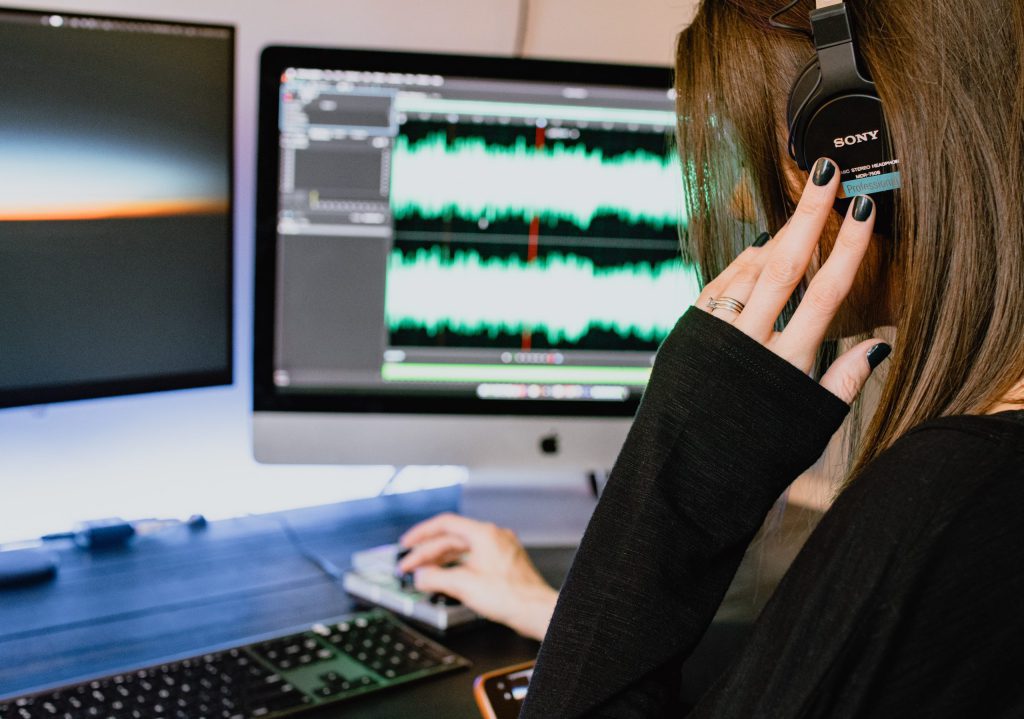Photo credit: Kelly Sikkema
Sometimes a track just isn’t gelling. It’s lacking a certain vibe and you don’t know how to elevate it. Next time you run into that scenario, try one of the four music production methods below. These practices have helped me produce songs I’m way happier with.
Layer (Almost) Everything
Layering the elements of a song has drastically improved my productions. It’s so simple, but it makes such a big difference. Layering makes things sound fuller without them being too in your face.
So here’s how I layer different instruments in my productions. Try these out in your next track and see how it feels to you…
How I layer vocals:
- Record the main lead vocal track with no panning
- Record 2-3 layers of BGVs singing the lead vocal melody (or more layers during the chorus), panned left and right to varying degrees and gain levels lower than the lead vocal track
- Record 2-3 layers of each harmony part, panned left and right to varying degrees
How I layer acoustic guitar:
- Record the same guitar part four times
- Put the four layers of guitar on separate tracks, pan them to varying degrees (example: 15% left, 30% right, 50% left, 70% right)
How I layer drums:
- Program the drums (or record them live if you have the capability)
- Add a kick sample and a snare sample on their respective channels that match the kick and snare from the original drums
How I layer bass:
- Record the bass part
- Record two layers of the same bassline but played on electric guitar
- Pan the electric guitars left and right
How I layer piano:
- Play the piano part on a MIDI controller
- Duplicate the track then change the sound to something different
- Pan the two parts left and right
Buss
Bussing is a way to make your life easier and your productions fuller. It may technically be considered a mixing tip, but there’s so much overlap between producing and mixing that I’m going to include it on this list.
Using a bus (or “aux”) channel in your DAW involves sending duplicated audio of a channel to another channel (the bus channel). So when you add an effect to this bus channel, it applies the effect to the duplicate audio.
So you can send several layers of vocals (or whatever) to the bus channel and apply an effect to the bus channel. That will apply the effect to all of the channels you’ve sent to the bus.
Why is this an amazing tool?
Because manually adding an effect to each channel would be time-consuming, and changing the settings for each channel individually would be tedious.
But by bussing, you can adjust the effect for multiple channels from one place (the bus channel).
Less But Better
In Essentialism: The Disciplined Pursuit of Less, Greg McKeown talks about the idea of “less but better,” which is at the heart of essentialism. Focus only on what actually matters and you’ll be able to do it better.
And essentialism applies to producing. Honestly, producing music is mostly about saying no. You have endless options for directions to take a song. So a skilled producer knows how to say no, what to say no to, and what elements to focus on.
Sometimes less really is more. The perfect example of this is Justin Bieber’s “Lonely,” which Bieber wrote and produced with Benny Blanco and FINNEAS. My take on the song is, this is Bieber commiserating with his younger celebrity self, and how he was desperately lonely (and maybe still is).
And the production is literally just electric piano and vocals the whole way through (along with some very subtle synth-y textures). It gives me goosebumps.
Get In Your Feels
One of my artists was recently having trouble deciding on what elements he wanted and didn’t want in his song. So I wrote back to him:
“The overall thing to remember is, how does the song make you feel? That’s your compass, not what you think the listener would want to hear. They don’t know what they want to hear, they just want to feel something when they listen to your song. So you have to make decisions from your feels.”
This has been one of the most helpful reminders for me as an artist/producer. The song has to make me feel something. It’s the way I make production decisions. It’s how I decide what songs I should release and what songs need more work or need to be shelved.
Pay attention to your emotional reaction to the production, and let that guide you.

